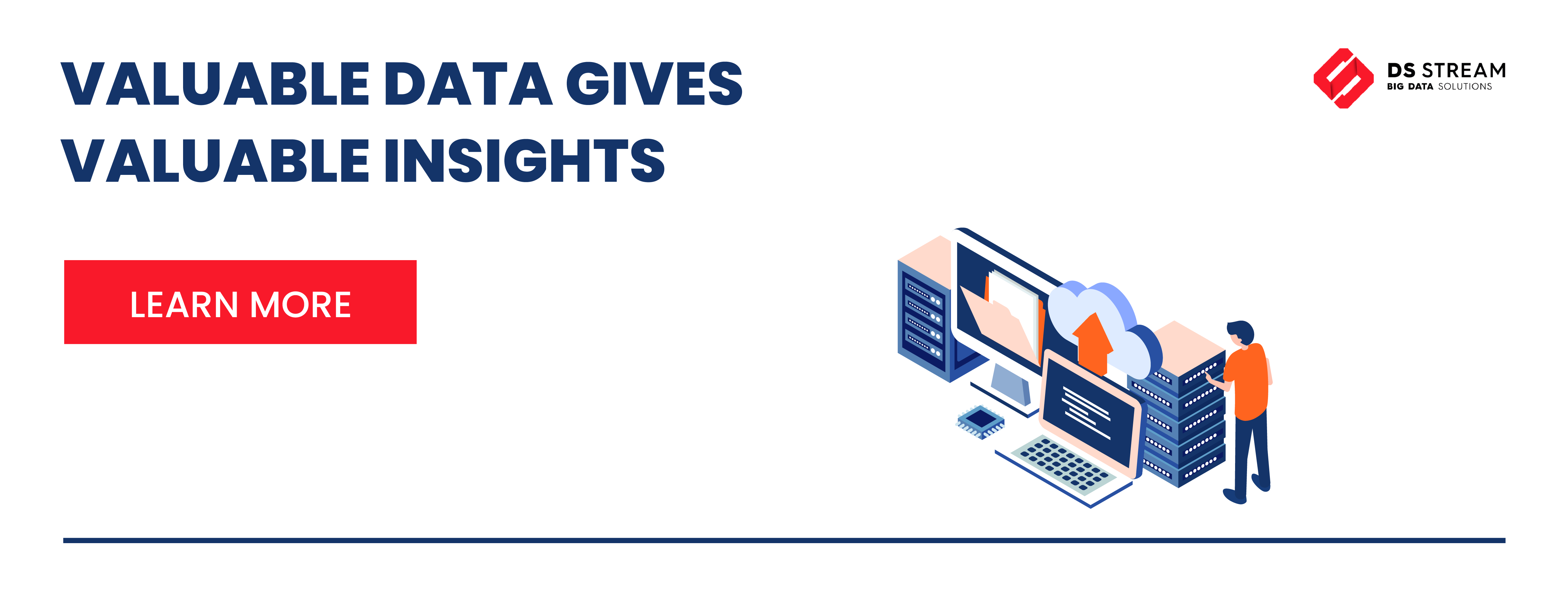
-
29 September 2022
- Big Data
All businesses are making some effort to become more data-driven. Small, medium and large companies – they all research the market and look for efficient tools for analytics and automation that can significantly improve the way they operate on daily basis. Why is data science so important for retail companies? Read our article to learn more.
In retail, a sale takes place between a company and an individual consumer (not another company). A retail transaction occurs when the buyer is the end-user of the bought product. The sale itself can be conducted through various sales channels (it doesn’t have to be direct, it can be also carried out in an online shop). Data science for retail is a collection of techniques and technologies that can help retail companies improve the quality of their services and increase their number of customers.
Data science in the retail industry – statistics
The value of the retail analytics market worldwide was expected to grow significantly till 2022. It certainly has changed a lot since 2016, especially because of the COVID-19 pandemic, which resulted in dynamic growth for the e-commerce sector in general. Today, experts predict that the retail analytic solutions market will grow even more in the coming years. At the same time, we can read more about its particular use cases. Statista author, Sarah Feldman, wrote in 2019 that when it comes to AI, retail companies are focusing on machine learning. A strong focus on AI, ML and advanced analytics means that retail organizations are trying to become more data-driven. 74% of AI use cases in 2019 were customer-facing projects and 16% of them were related to the business operations.
No matter which department of your retail company you apply advanced solutions in, you always have to take care of your data quality. After all, modern business solutions leverage business information, and by putting your trust in low quality datasets, you risk the future of your organization.
Data science for retail companies – what are the challenges?
There are many benefits of using advanced AI technologies and analytics for business purposes, but leveraging data science may be challenging. There are some very common data science problems in retail that you should consider when making plans for your data science project, such as:
- Guaranteeing high data quality – business data in retail comes from various sources and in many types, and can also require validation and cleaning. In many cases, information has to be processed first, before it is used in analytics, because it can be incomplete, duplicated or inaccurate. Before you start with data science for retail, create a strong strategy for ensuring high quality datasets.
- Securing sensitive information – most companies from any industry deal with sensitive data. Your customers’ trust is one of your essential assets. Once it’s lost, it may be really difficult to regain. Additionally, allowing data breaches and data theft could result in expensive penalties.
- Ensuring legal compliance – compliant software is a great way to ensure a minimum level of data security at the very beginning. These days, compliance is not optional, but obligatory. Make sure you invest in compliant business tools and systems.
Now that you know what challenges you have to prepare for before applying data science in the retail sector, let’s have a look at some potential data science use cases.
What are data science use cases in retail?
There are many data science use cases in the retail industry. Below, we’ll describe some interesting data science business applications.
1. Price optimization
We would all like to believe that products’ prices are based on their quality and manufacturing costs. Well, that may partially be true, but these days there are many other things taken under consideration when setting prices, and in many cases, it is software that chooses the right price for each customer. Yes, the right tools, capable of running fast analysis in real time, can leverage historical data to establish what type of client is purchasing the product, and set the right price for exactly that individual client.
2. Content personalization and recommendations
Price optimization may not be something that your customers would be happy about, but content personalization was actually invented in order to improve their experience. Practically everything can be personalized – texts, headlines, videos, offers etc. Any type of content can be created in many versions, and the right version is displayed based on a customer’s type.
Your users can be gathered into so-called segments based on the analysis of their preferences and previous behavior. After users are grouped, the system only has to show them the proper content on the retailer website or in the e-commerce application.
You can also leverage recommendation engines. Based on your customers’ historical transactions, preferences or real-time viewing behavior, such engines can select products and services a specific person can be most interested in and present it on the website or in the app as “recommended” for that person.
3. Augmented reality
Augmented reality (AR), similarly to VR, is more complex and still not such a popular solution for retail, but some companies are testing it in their applications and websites. AR allows users to combine the view of a real, existing space and virtual graphical representations of other things in an application. How is this good for retail? It provides a real time experience of the product to customers even if they cannot be in the actual, physical store. Nowadays, this technology is being tested by fashion stores, shops with furniture (such an AR solution has been introduced to customers by Ikea) and other companies.
Augmented reality is quite entertaining. It helps users make more informed decisions about purchasing, even though they can’t see an item in reality. Applying this technology in your app or website can actually reduce the total amount of returns from disappointed customers.
4. Inventory management
Analyzing data in real time enables you to keep your finger on the pulse, no matter where you are and what you are doing at the moment. It is very useful for retailers and e-commerce companies. Thanks to advanced analytics, you can take advantage of inventory management automation. There is software on the market that can analyze your previous orders and sales efficiency to suggest how many new products you should order, or even generate the order automatically.
5. Customer satisfaction analysis
With the right tools, you can easily learn what your customers think of you. Some analytics capabilities are even included in commercial marketing automation tools. They leverage Natural Language Processing (NLP) to detect the sentiment from the text published in many communication channels (social media, websites comments, discussion groups etc.).
Retail data science projects – how do you get started?
If you have never carried out any data science project in your company, there are some considerations and things you have to do. First, you have to decide if you want to run various new processes in-house, or would you rather look for an experienced data science organization to assist you with that. Then, there is the matter of gathering your data science team and selecting the right tools and software. You have to prepare your company well for entering the world of data science and advanced analytics, and we can help you with that. Contact us to learn more.
Check out our blog for more details on Big Data:


